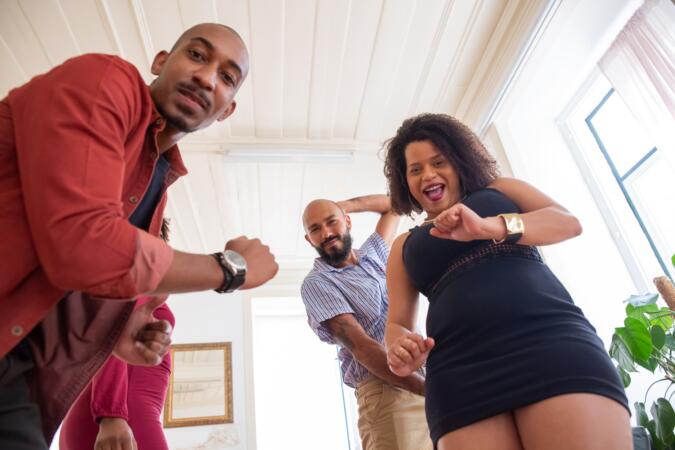Line dancing has become a staple of the Black community‘s culture as it naturally provides a sense of comfort, unity and pride at any festivity.
No matter where Black people are, if “Candy” by Cameo comes on, it’s an instant signal that leads everyone in attendance to dance in sync like a flash mob while doing the Electric Slide. There isn’t a wrong time or place to break out in dance or age demographic, so this can often be seen at a family reunion, wedding, graduation and birthday party, bar mitzvah, randomly in public places like a park or festival, and more. It’s an unspoken way Black people bond and socialize.
@ichvse Can I have another chance? 😩 @Naturally Melonie @Jamal The Creative @Chantelle Rose @Mitch2794 ♬ original sound – Chase
Soul line dancing, as some like to call it, has been around for centuries as many cultures used synchronized dancing to tell stories, conduct rituals, celebrate and connect. In the 19th and 20th centuries, most line dances are accompanied by disco, R&B and hip-hop songs. When someone participates in line dancing, they dance without a partner and stand next to others, and face the same direction in lines or rows. The moves are repetitive dance steps that involve smooth and quick footwork.
For African Americans, line dancing stems from the people of the motherland of Africa and Caribbean countries according to The Washington Post. In Western civilization, the origin of traditional assembled dancing dates back to 1776 when slavery was prominent in America with enslaved people using it as a way to connect spiritually and to discover parts of the Underground Railroad according to Thomas F. DeFrantz, a Duke University African and African American dance studies Dance, Theater Studies, and Gender, Sexuality, and Feminist Studies professor.
“They tell us about black lives, black faith, black transcendence and black resistance,” DeFrantz said.
“We’re looking for places to congregate, to gather, to celebrate together, to feel safe, to feel empowered, to feel like we can express ourselves,” he added.
Line dancing was a sacred part of the Harlem Renaissance era as Black culture evolved artistically. During that time, swing dances like the “Shim Sham,” a tap dance routine created in 1928 at the Savoy Club by Leonard Reed and Willie Bryant, were birthed. The choreographed dance grew very popular as the genre remained a fan favorite throughout the 1930s and 1940s.
In the 1950s, “The Stroll” became another household dance that derived from the Black community but only came popular after it debuted on American Bandstand, reported Madame Noire.
The progression of group dancing continued in the 1970s when disco, funk, soul and R&B music took over the airwaves and by the end of the decade the “Electric Slide,” one the most prominent line dances, was created by Ric Silver, who copyrighted the dance routine. Although the dance was originally showcased in Marcia Griffiths’s music video for her song “Electric Boogie,” Silver credits the movie The Best Man (1999) with making it more popular according to an interview.
“There have been numerous films that have included the ‘Electric Slide.’ Most notably The Best Man and The Replacements,” the former professional dancer said. “It’s because of the movie The Best Man that in the UK it’s known as the ‘Candy Dance’ because of the end of the film, they do the dance to a record called Candy.”
Since then, the “Cha-Cha Slide” by DJ Casper became a cultural phenomenon in 2000 and was followed by the “Cupid Shuffle” by Bryson “Cupid” Bernard and “The Wobble” by V.I.C. in 2007 and 2008. The latest viral line dance, created last year by Jo Thompson, is performed to R&B singer Tamia’s hit song “Can’t Get Enough.”
@realtamiaworld #Still dancing and celebrating love after almost 23 years.. #granthill 🖤 #lovelife #cantgetenoughshuffle #tamia #tamiahill ♬ original sound – Tamia Hill
Simply put, Black people love line dancing because there’s nothing more powerful, and fun, than a group of people coming together to enjoy and partake in a soulful tradition.

